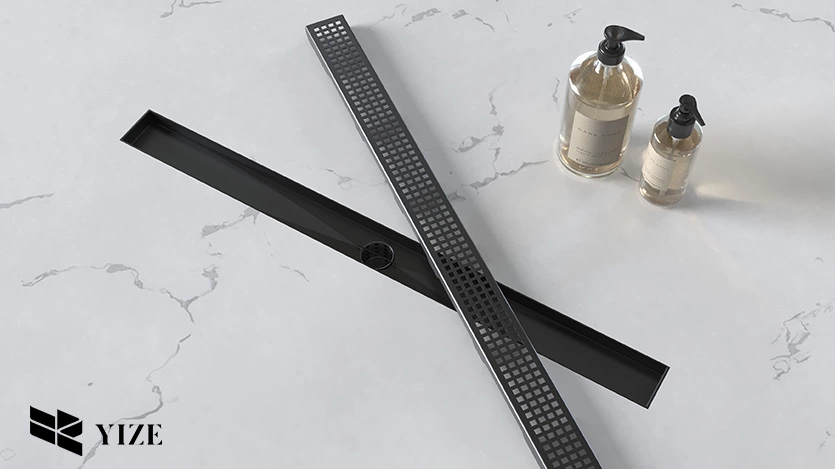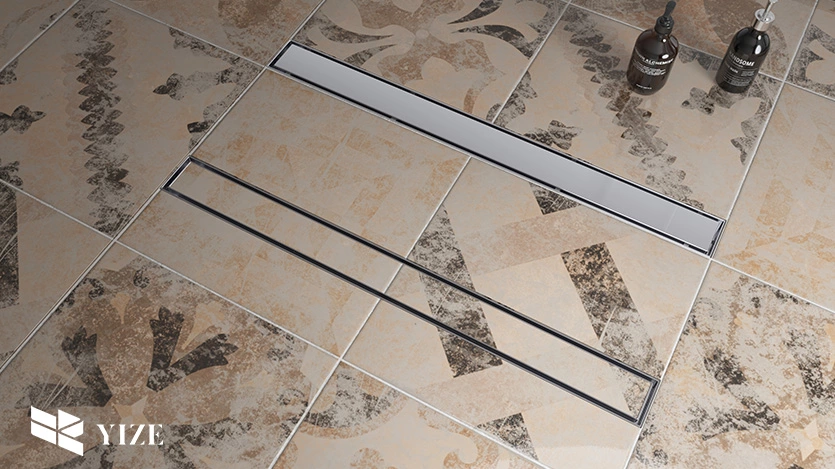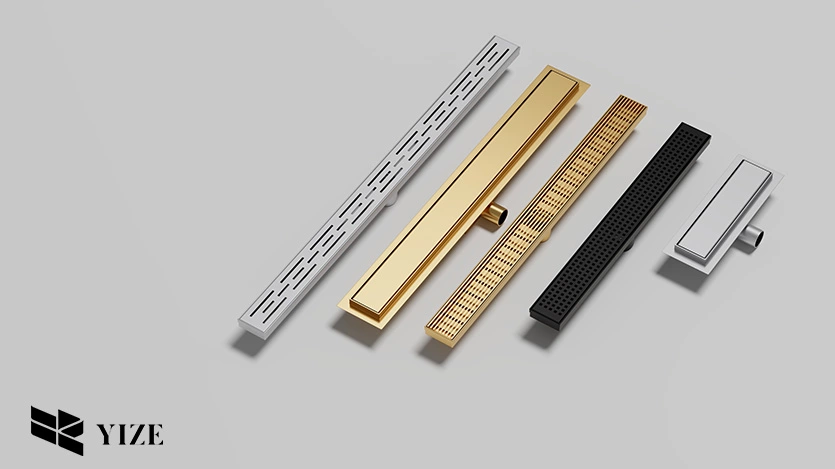Shower drains are essential for a functional bathroom, so much so, they can completely change the vibe of your shower. Shower drains come in all shapes and sizes, and there is a plethora of drainage systems you can choose from. So, it can often get quite daunting for people to choose the right one.
Shower drains are one of those things that you never have to worry about ever again if you choose the right one from the get-go. In this article, we’ll lay out all the available options so you can figure out how to choose the best waterproof shower drain for your bathroom.
I. Select Your Waterproof Shower Drain Style
The first thing you should check when setting up a new show drain is to pick a type. Shower drains come in various types, and each has its practical or aesthetic considerations. Here’s a brief overview of what each type has to offer:
1. Traditional
Traditional shower drains are the most common ones out there. These are usually just round or square metal grates placed at the lowest point of the bathroom with a drain pipe running underneath.
The genius of this design is that it is dirt cheap, easy to install, easy to clean, and does its job. Basically, it is a tried and tested design, but it does lack the aesthetic flair of more modern designs. These are also called “point drains” because they act like a point where all the water flows into.
The only downside to point drains is that they may cause the water to pool into a single point if the volume exceeds a certain threshold. But this shouldn’t be a problem unless you’re dumping a large bucket of water, or if the grates are clogged with hair and other debris.
-1.webp)
2. Linear
Linear shower drains usually come in long narrow rectangular shapes. These do come with a variety of different grate designs, but most usually fall into the long narrow stripe category because that just fits the profile better.
Linear drains are more spread out than traditional point drains because the drain is more spread out. You can have a linear drain run along an entire side of the floor, or find a more stylistic placement.
Linear drains are a bit better than point drains because they prevent pooling since the drainage surface is so wide. The downside of the linear drains is that they require very precise installation, and are significantly more expansive than most point drains. Cleaning the grates of a linear drain is also slightly harder than cleaning the point drain grates.

3. Tiled-In
Tiled-in or Discreet shower drains are the most minimalist drains out there. These drains stay beneath the floor tiles with barely any visible grates showing up top. There are no secret gimmicks to these tiles, they just need a very precise installation.
Discreet shower drains fit well with luxury-themed bathrooms. But, while they look very clean, they do require a lot of maintenance. Since there’s very little space for the grates from the top, debris can often clog the opening, and they are much harder to clean than the previous options.
Ultimately, the luxury looks and the modern aesthetics are the only selling point of these types of shower grates. These are also almost impossible to install without the help of professionals.

II. Things To Consider While Buying Waterproof Shower Drains
Picking the right style isn’t the only thing you’ll need to consider when getting a new shower drain. There are several other considerations as well to ensure that your shower drain lasts long and performs well.
1. Material
The first thing you’ll need to decide is the material for your shower drain. The usual options are stainless steel, brass, and composite materials. Since shower drains are long-lasting investments, it’s worthwhile to invest in durable, high-quality material over cheaper alternatives.

Metallic options almost always beat the non-metallic options. High-quality stainless steel or brass is extremely durable and used for both regular and luxury shower grates. You can also get very cheap plastic ones too, but those will start degrading in a matter of weeks.
2. Capacity
The capacity of your shower drain is related to your usage case and the size of your bathroom. The plumbing that will carry the water from the drain will also impact this decision. It’s best you consult some professionals to get a good grasp of the size and capacity necessary for your needs.
For a regular bathroom with a single shower, you won’t need anything too fancy. But once you start getting rainfall showerheads and other fancy water systems, you’ll need to upgrade your shower drain capacity accordingly.
3. Waterproofing
While you might expect shower drains to have waterproofing by default, that is not always the case. Some cheaper manufacturers do not provide an adequate waterproof coating to the grates, which results in them rusting and corroding over time.
So, if you want to prevent this, you’ll need to check and make sure that the grates have a waterproof membrane when you’re shopping for your shower drain.
Frequently Asked Questions (FAQs)
Q1: Can someone DIY a shower drain installation?
You can if it’s a traditional point drain. But for a larger project or a tricky shower drain like the Tiled-in ones, please consider a professional installer.
Q2: Do all shower drains need a slope?
Yes, they do. All shower drains, from the cheapest to the most expensive one, use gravity to draw in the water.
Q3: Does the plumbing affect the drain capacity?
It does. Even the biggest shower drain can’t handle the water capacity if the pipe used to carry it is too narrow.
Q4: How often should one clean a shower drain?
It largely depends on your usage frequency. But it is best to clean a household shower drain every month or so.
